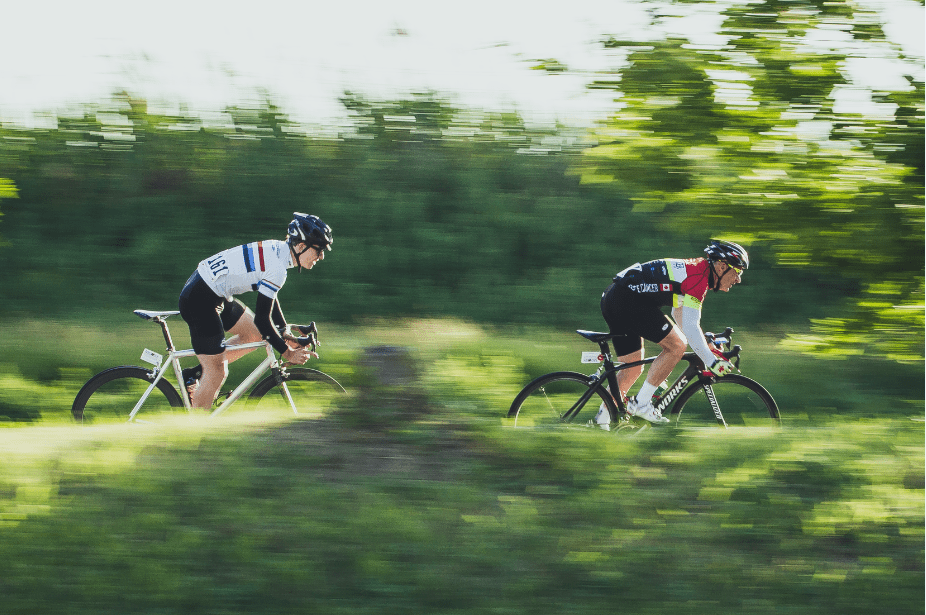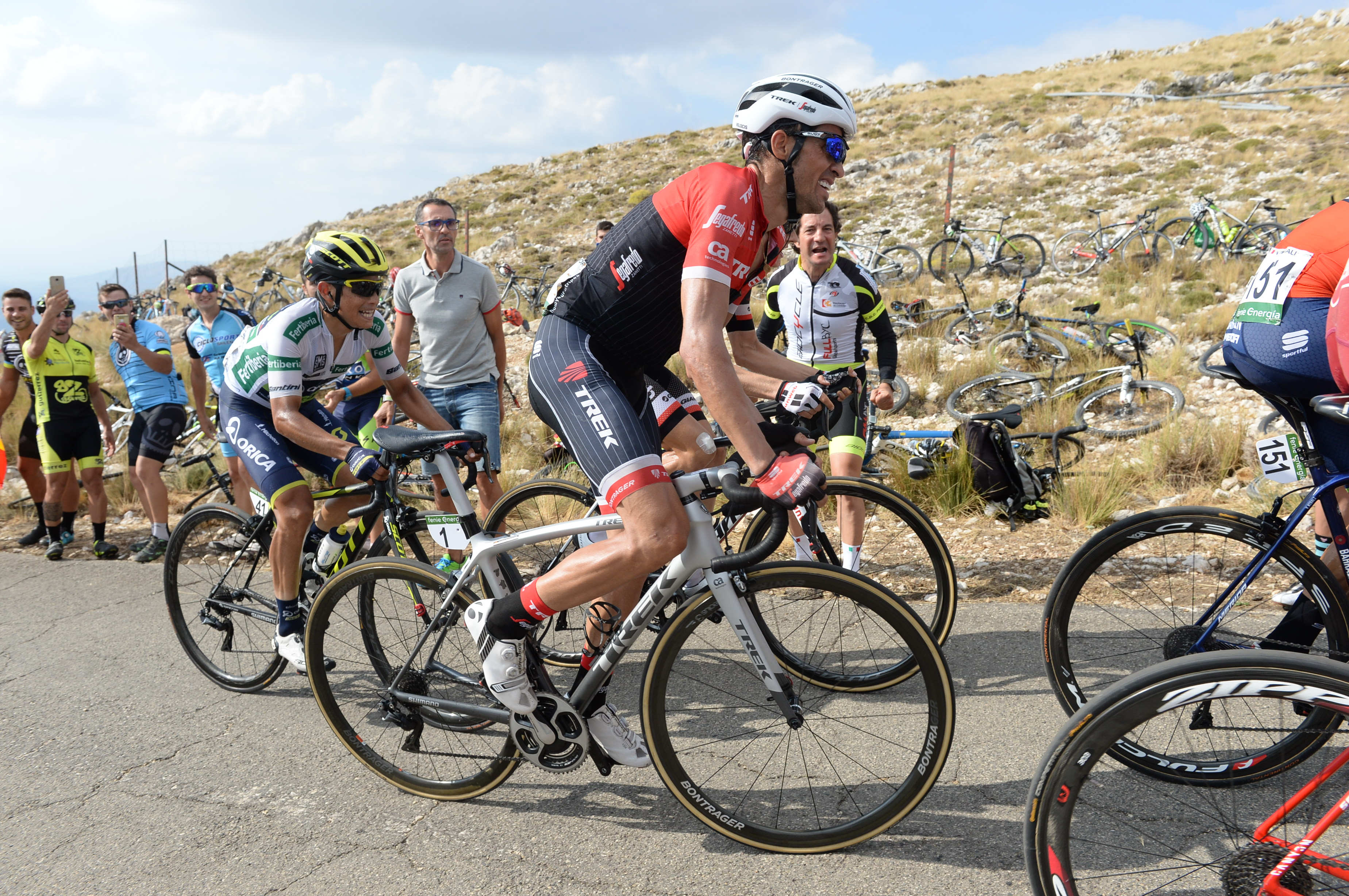Find more power by pedalling out of the saddle
Standing will deliver big results on the bike


Forget beet juice and coconut water: standing is a cheap and effective way to boost your performance today, for free. You can see this skill in the most athletic moments of our sport – the Tour de France sprint, mountain bike climbs and cyclocross starts. Whether you want to climb better on the road or navigate tricky root sections on local trails, you’ll need to get out of the saddle. By simply standing up on your bike, an athletic skill many cyclists are missing, you’ll enjoy rides more, and maybe even get on the podium.
Why stand?
When you ride, you can sit or stand to shift the load to different muscles. When you stand, you can use your body weight to turn the pedals over athletically as you go up and over tough terrain. If you have had to walk up a climb on a road bike or had your front wheel unweight on a steep trail, then it is worth practising standing to give yourself options. You may have heard that standing takes more energy than seated pedalling, but that ignores the mechanical and energetic advantage of carrying speed or leveraging your body weight over variable terrain. Efficiency, in the sense it is often used – riding all day at a slow pace – is not always desirable. Sometimes it is worth expending more energy for a short period to climb a hill rather than slogging at a low r.p.m. for a longer duration. Similarly, making an acceleration from a group or getting to the first corner is not a low-energy move, but can be race-winning one.
How do you stand?
When you stand, your goal is to ride in a straight line as you lean the bike back and forth. As your right foot reaches the bottom of its pedal stroke, you lean the bike to the left, and vice versa. Start off by doing these actions slowly up a gradual climb. Then begin adding speed. For another exercise, set up some cones in a grassy field. Keep your outside foot down and unclip your inside foot just before you turn around a cone. With your inside foot off of the pedal, you are tricked into putting all your weight onto the outside pedal, which you can transfer to your standing pedalling.
If you spend a lot of time on a spin bike or trainer, keep in mind that such devices may keep you fit, but will hinder your standing skill. Because your bike is locked in a vertical position, the trainer teaches you to pedal without moving the bike, which is awkward and lacks the athleticism we want outside. My coaching clients see limited indoor standing work for this reason. Instead, I recommend using any outdoor rides on the fat bike or trips to a bike park to work on standing form and strength training for power development.
When should you stand?

Bigger riders pay a higher price for elevating their bodies frequently and for extended periods. That may sound like a disadvantage for the big riders, but they typically also have better power seated than smaller riders. While body size will determine how much you stand to a degree, the terrain and event type is a bigger determinant. Smooth and high-speed criterium races require aerodynamics and, ideally, efficiency through smooth cornering. But you need to get out of the saddle to attack, stay on wheels and sprint.
Mountain bikers are in and out of their saddles constantly to be efficient and to let their bikes roll over terrain. Generally, fitter riders can stand more. But I believe the skill is only partially correlated to fitness. Many of my clients find that as their skills improve, they can stand to maintain a pace up a mountain bike climb or jump on a wheel to stay in a group. Once they have progressed their standing skill and fitness, better results and even an upgrade to the next category are not far behind.
For long rides or efforts, you’ll want to sit more and save standing for getting up steep sections or keeping the cranks turning as you start to fatigue. Often, road riders will sit and grind at cadences lower than 50 r.p.m. or even walk up steep grades rather than standing and shifting their weight side to side to essentially “walk on the bike.”
Are you ready to use more muscles and some athleticism to ride more comfortably and faster? Spending some time each week, even 10 minutes, working to find your balance at the bottom of each pedal stroke will help you get started with efficient standing. Try climbing out of the saddle for portions of hills and adding a sprint or two into your longer rides to help work on standing at higher intensities as well.
